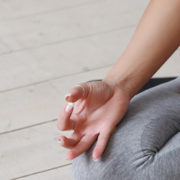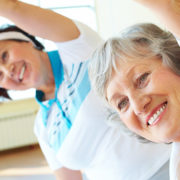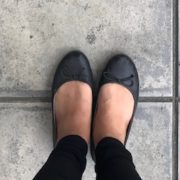Article by Kenny Lee | Featured on Make Mind Powerful
Mindfulness meditation is secular in nature, despite being practiced for more than two thousand years in a religious context. Its shift towards modern mainstream practice has seen its application in treating anxiety, depression or as a lifestyle adopted by many working professionals as a relaxation technique. Online meditation instructions are available easily and a list of mindfulness meditation tips like this may help beginners in their practice.
I’m not a meditation teacher. But I do learn mindfulness meditation almost two decades ago. I meditated regularly for 4 years, before stopping this healthy practice. That was when all the positives that I’ve built up from mindfulness practice start crumbling and that includes focus and emotional control.
After 17 years, I restarted my mindfulness practice, and mindfulness meditation has gained popularity in western countries. This time, I find it helpful in my battle against depression and also keeping my social anxiety under control. It is understandable that people with extreme stress or anxiety may find it difficult to meditate. Thus, I’m sharing this list of mindfulness meditation tips hoping to help beginners to kick-start their practice.
Here Are 22 Mindfulness Meditation Tips To Make Meditation Easy
1. Stop Trying To Empty Your Mind
One of the greatest martial artists, Bruce Lee‘s may be famous for his quote ‘Empty Your Mind, But if you take it literally as your goal of mindfulness meditation, you’ll end up frustrated because you just can’t turn off your mind like flipping a switch. So stop trying.
Meditation blogger, Allen Wei of LearnRelaxationTechniques.com wisely put it as:
“For beginners, I would focus first on learning to be mindful and unaffected by thoughts that occur during meditation. If they keep practicing and deepening their meditation — rather than trying to force their minds to be clear of all thoughts — they may eventually be able to experience the ultimate state of meditation.”
Despite what you may read how you could stop all your thoughts with meditation, the fact is as long as you’re still breathing and conscious, you will always have thoughts. The one important skill that you will develop with mindfulness meditation is to stop responding emotionally to the negative thoughts. That’s what “clearing your mind” is all about.
2. What is the best posture in meditation?

One of the common question meditation beginners asked is about getting the right meditation posture. Is the full-lotus better than the Burmese? What is the best posture for meditation? Here are some of the common postures in meditation.
Postures are just there to assist your meditation practice. If there’s anything such as the “best posture”, it’s one that should support your meditation practice, rather than hampering it.
The choice of full-lotus or Burmese become secondary, compared to whether the posture would cause you an unnecessary backache, or do you fall asleep easily while meditating. If there’s something in common with a good meditation posture, it’s to keep your spine firm and straight, but not too stiff.
3. “I can’t feel my breath”
Most mindfulness meditation instruction starts by instructing the practitioner to focus on their breathing. Some started by counting the breath to develop the initial focus needed, while others may start with directly observing the sensation of each inhale and exhale.
Depending on individuals, sometimes the sensation of the air flow on the nostrils could be vague and too weak for their mind to focus on. If you’re experiencing this issue, you’ll find that your mind wanders easily because it’s so difficult to anchor your mind on the breathing itself.
A good solution to this is to change your primary meditation focus to your abdominal. Instead of trying to feel sensations on your nostril, you now observe the movement of your abdomen as each time it contracts and detracts when you breathe. You can even place your palm on your abdomen for better focus.
4. Can I Start With Walking Mindfulness Meditation?
Perhaps you are not aware, but mindfulness meditation can be found in the form of sitting, walking, standing and lying down. The lying meditation is seldom taught as practitioners could easily fall asleep. The only time I would suggest practicing lying meditation is when you’re having trouble falling asleep.
The sitting form of mindfulness meditation is the best form of meditation if you’re after deep relaxation and calming of your mind. But it is also a condition that your body and mind may find it hard to get used to in the beginning, as the sensations are more subtle.
That’s why I recommend meditation beginners to start with 10 to 15 minutes of walking meditation before proceeding to the sitting meditation. Walking at a slower pace and with your eyes open is something your body is familiar with. The movement of your foot has the obvious sensation to train your mindfulness on.
5. “I can’t stop my mind from wandering”

There is a big difference of bringing back your wandering mind to stopping your mind from wandering. Mindfulness meditation is about doing the former in a relaxed manner. When you’re starting off your practice, you can expect to spend the first few sessions doing nothing but attending to your wandering mind.
This is when most practitioners who’re practicing on their own gave up as they don’t seem to experience the calm that’s often associated with mindfulness. If there’s anything you need to do, it’s to have patience and keep bringing back your mind to your breathing as it wanders.
It could be two, five or ten sessions. In time, you’ll find that it wanders less and the amount of time you spend focused on your breathing is more. This will often result in what most people stereotyped as a good meditation session.
6. How do you handle extreme emotions in meditation?
As your practice deepen, it is possible that you’ll start to experience profound joy or deep sadness that you’ve never felt before. Some practitioners also felt grief, or crippling fear when they’re meditating. That’s when panic sets in and they felt something has gone wrong with their practice.
While I do not personally experience extreme negative emotions while meditating, I do encounter moments of bliss while practicing walking meditation. And trust me when I said blissful experiences is as bad as negative emotions when it comes to putting a halt to meditation.
I do remember my meditation teacher’s advice that regardless of what you felt or experience in meditation, you should just mentally note it as “feeling” or “thinking” and bring back your focus to your breathing. This is one golden rule that my meditation teacher emphasized to prevent going astray in our practice.
7. Stop expecting results when you meditate.
The reality is, most people meditate because they want to achieve something through meditation. It could be a concrete goal of overcoming anxiety, defeat depression, preserve their brain from aging or something general like having a stronger mind.
It’s normally as a human being to have expectations and goals but it’s very important that you do not bring these expectations to your meditation practice. Not even thoughts like “I want to have a good meditation today”.
Because what happened is when you’re starting your meditation with a goal, there is a high possibility you will spend your entire meditation practice struggling to achieve that. Instead of meditating, you’re drowned in thoughts of expectations. And you became frustrated when you found that the whole meditation ends up as a nothing but a thinking session.
8. Practice Letting Go

It’s no surprise if you can’t meditate when you have angry or hateful thoughts. After all, you’re all human and not a monk who spend all his time cultivating good thoughts in the forest.
That’s why letting go of ill thoughts is a good way to calm a raging mind before practicing mindfulness meditation. One of the best ways I’ve known is to learn and practice loving kindness meditation.
Loving-kindness is a form of meditation that cultivates and radiates self-love and compassion. Like mindfulness meditation, it can be practiced in a secular context and is particularly effective as an anger management tool.
9. Be Patient And Consistent
Just because the mind is abstract it doesn’t mean that it can be reconditioned in hours or days. Even if it could, changing neuron pathway in your brain doesn’t happen instantly either. That’s what mindfulness meditation actually does when you’re practicing it consistently for a period of time.
Athanasia of MeditationDailyHabit.com puts it this way:
“Something else that people needs to know is that meditation requires patience, persistence, and daily commitment. If you meditate once in a while you will always find it as difficult as the first time. It’s like exercising. If you exercise every once in a while you will not see any results. When you meditate on a daily basis the moments that you stay focused (or without any thoughts) will become longer. It’s these moments between your thoughts/distractions. You can imagine them like gaps. These gaps become bigger as you continue to meditate daily.”
If there’s any number I could put to the minimum amount of duration you need to meditate, it would be 15 minutes a day. While results may differ per individual, most people experienced positive improvement in their mind and body after 8 weeks of meditation.
10. Numbness when meditating

Depending on your physical condition, it could be possible that numbness could set in pretty early in your sitting meditation. The most common instinctive behavior would be to shift your posture or to move your leg around to cease the numbness.
While there is nothing wrong with that, strong sensations like numbness or itchiness could be turned into a powerful meditation object. Here’s what you should do before giving up to these uncomfortable sensations.
Shift your focus on your breathing to the numbness. Observe and feel without emotionally attaching to the sensations. Be aware of any intention or thoughts of moving or scratching that arise in your mind. Try to do this as long as you can before shifting to a more comfortable posture mindfully.
11. Handling Distraction
It’s not common for distractions to occur during your meditation practice, especially if you’re meditating at home. When your phone rang or your neighbor’s dog bark interrupt your meditation calm, thoughts of anger and hatred could pretty fast overcome your mind.
That’s because we as human are naturally attached to good experience, and when robbed out of it, we respond based on our natural instinct. To prevent a moment of distraction from turning your meditation bliss into emotional brooding session, it’s important to remember that calming experience is just a by-result of meditation, and not the end goal itself.
The next time you are distracted by external noises in meditation, just mentally note that you are “hearing”, and avoid placing emotional labels such as “I hate the dog barking” or “Who would have called at this wrong moment?”. That is what mindfulness is all about.
12. Drowsiness in meditation.
It is a common occurrence for meditation beginners to start feeling drowsy after a few minutes of sitting meditation. At times it seems so hard to force yourself to stay awake even when you’re determined to. While I’ve read some “guru” talk about how this is another state of consciousness in meditation, I prefer to discuss ways to get around this, instead of overcomplicating the whole issue.
Avoid heavy meals before meditating. If you find yourself sleepy after a heavy lunch at work, it’s going to be the same thing in meditation, especially with your eyes closed. If the feeling of drowsiness persists, turn your mindfulness to your mind itself. Note how your mind feels when it’s struggling to stay awake. For me, it’s like having a huge damp cloth slowly suffocating my mind.
Sometimes that drowsiness could give away to great clarity if you persist to be mindful. But if you struggled for more than 15 minutes fighting to stay awake, your body could be really tired and in need of rest. Well, if that’s the case, go get a good sleep.
13. Dealing With Backache

Body ache happens in meditation, regardless of age and gender. I often struggled with backaches when I’m practicing sitting meditation. Sometimes it could be you’re sitting with an incorrect posture that gives pressure on your spine. (Read this article for correct meditation postures)
In meditation practitioners of older age, existing physiological problems could cause backaches that could further be aggravated by unsupported sitting posture. In that case, meditation cushion with strap could be useful, or practitioners could opt to sit on a normal chair and cushion instead.
As with other distractions encountered in meditation, painful feelings can be turned into a mindfulness object. With that said, meditation should not be anything but a painful experience. When the pain is overbearing, it’s time to shift to a comfortable posture mindfully.
Read more about dealing with pain when practicing mindfulness here.
14. Don’t Over-Analyze Meditation
For first-timers, mindfulness meditation could be an interesting concept and you may want to back your practice with additional knowledge from mindfulness books. While reading about mindfulness causes no harm to meditation practice, you should need to be aware of the difference between intellectual knowledge and the real experience itself.
It could be tempting to compare what you’re experiencing with meditation with the different state of mind that you could have read in meditation books, but such attempts could hamper instead of helping with your progress.
Analytical thinking is, in fact, the opposite of meditation. The former is all about judging and involved emotional decision making while mindfulness meditation is about experiencing thoughts and senses as ‘they are’. Put your analytical mind away when you meditate.
15. Bring Mindfulness Practice Into Your Life

Most people who tried mindfulness meditation hopes that their life, in general, could improve in a positive way. Yet, we often notice that some confined their mindfulness to the 15 minutes of meditation, and spent the rest of their days absent-mindedly.
It’s only common sense that if you don’t put what you practice into daily tasks, your progress in meditation and life improvement could be limited. A huge list of meditation tips couldn’t help you if you’re not willing to bring mindfulness to your daily life.
The same concept of being attentive could be applied to mindful eating, or when you’re commuting to your work. Mindfulness is also helpful when you’re driving and trapped in a bad traffic. You’ll be amazed how much impatient thoughts you’re keeping away with mindfulness.
16. The Best Time To Meditate.
While there is no definite best time to meditate, most practitioners either chose to meditate early in the morning, when their mind is fresh or in the evening, as they sought to relax and unload from the stress and work.
Ther are circumstances though, that meditation may not be conducive and you should not force your mind upon meditating in such scenario. People who suffered anxiety and depression struggled with meditation when their mood is on the low.
You may also find it hard to meditate when your mind is fatigued and very low on energy. A good analogy will be getting your body to work out at the gym when it’s already tired from moving heavy objects in the day. Mindfulness meditation, after all, is like the brain heading to the gym.
17. Lack Of Progress With Meditation
When you’re paddling a boat off to the sea, you’ll notice the shoreline disappear gradually. You know you’re actually moving off. Then, everything seems the same, except the occasional island and gulls that fly past. It may seem that you’re not moving, but reality can be deceiving.
That’s what happened to most practitioners who started mindfulness meditation. After a few sessions, they start to feel a calmer and relaxed mind when meditating, before the meditation experience turned more routine than spectacular.
Progress in meditation could be subtle, but if you’re experiencing a better focus or better emotional control, then you are definitely making progress. Unlike hypnosis, mindfulness meditation has no end-goal and should be viewed as a constant mind workout for our continuous wellness.
18. Join A Meditation Community
Starting mindfulness meditation from online resources is easy, but continuing the practice at a more advanced stage may be a challenge. As one goes deeper in meditation, joining a group of like-minded practitioners could be conducive to progress in meditation.
The experience of meditation in a group and sharing of each individual’s experience thereafter could be quite enlightening. You can learn more from a meditation group than reading mindfulness meditation tips like this. If you can’t find a meditation group locally, try searching for forums or meditation groups in social media online.
19. Learn From A Qualified Meditation Teacher
Meditation e-books and online resources could never substitute the guidance of a meditation teacher. Learn from an experienced meditation teacher whenever possible. I have the privilege to train under one when I started my journey in mindfulness meditation. But that was almost two decades ago.
These days, especially in busy cities, it could be difficult to get access to a meditation teacher. Alternatively, you could subscribe to online meditation courses, or learn mindfulness from renowned mindfulness teachers like Jon Kabat-Zinn, Tara Brach, and Jack Kornfield here.
20. Listen To Relaxing Music Before You Meditate

You may have heard how mindfulness meditation could be relaxing and calming, but that is only when you have mastered mindfulness to a certain degree of competence. Else, trying to meditate with a stressful mind could be pointless. That’s when meditation music comes to play.
Putting on relaxing music may provide a calming environment, but it serves nothing more than a pleasant distraction and defeats the purpose of meditation. Mindfulness meditation in its purest form is about awareness of the senses. Of course, it’s a personal choice but I highly do not recommend that in your practice.
Personally, I do not listen to any music when practicing mindfulness meditation. But listening to relaxing meditation music before meditating is a good way to calm down an anxious mind, especially for beginners.
21. Be Consistent
With mindfulness meditation becoming a mainstream trend, one of the most common questions revolved around the optimum duration of a meditation practice. While some meditation blogs recommend 5 to 10 minutes of daily, I will up the limit to a minimum of 15 minutes per session.
That’s right. Even an additional 5 minutes will make a huge difference when it comes to making real progress in meditation. For most beginners, the first 10 minutes are nothing more than ‘warming up’ process, often involving wrestling stray thoughts that never seems to stop. It takes more than that to produce real results.
When you’re comfortable with 15 minutes of meditation, do try to increase your practice to 30 minutes a day. That’s the best duration for city dwellers where most people have hectic schedules. An old Zen saying goes “You should sit in meditation for 20 minutes a day unless you’re too busy; then you should sit for an hour“.
22. Use A Guided Meditation App
While I’m always of the opinion that it’s best to learn meditation under the watchful eyes of an experienced teacher, I can’t discount the fact that some meditation apps are pretty useful in guiding beginners. Otherwise, beginners can feel pretty disheartened not knowing if they are practicing correctly.
It can be even harder to meditate alone if you’re facing a high level of stress or anxiety. I personally use Aware to complement my practice. I suppose it’s the next best thing when you can’t get hold of a meditation teacher in your local area.
Grounded in the belief we are all unique beings, we begin each new client with a meticulous bio-mechanical evaluation, assessing each joint in it’s relationship to the movement of the body as a whole. Our therapists are skilled at reading the unique story your body tells, and treating everything from the bottom of your foot to the top of your head.
Bodywise Physical Therapy is located in Portland, Oregon. The Bodywise approach is wholistic, individualized, and can benefit people of all fitness levels. While Bodywise has always specialized in general orthopedics, spine rehabilitation, and sports medicine, they have evolved into a truly wholistic practice integrating Hands-on treatments with Mindfulness, Pilates, Trauma Release Exercise, Women’s Health and Lymphedema.
Physical Therapy Portland Oregon
















